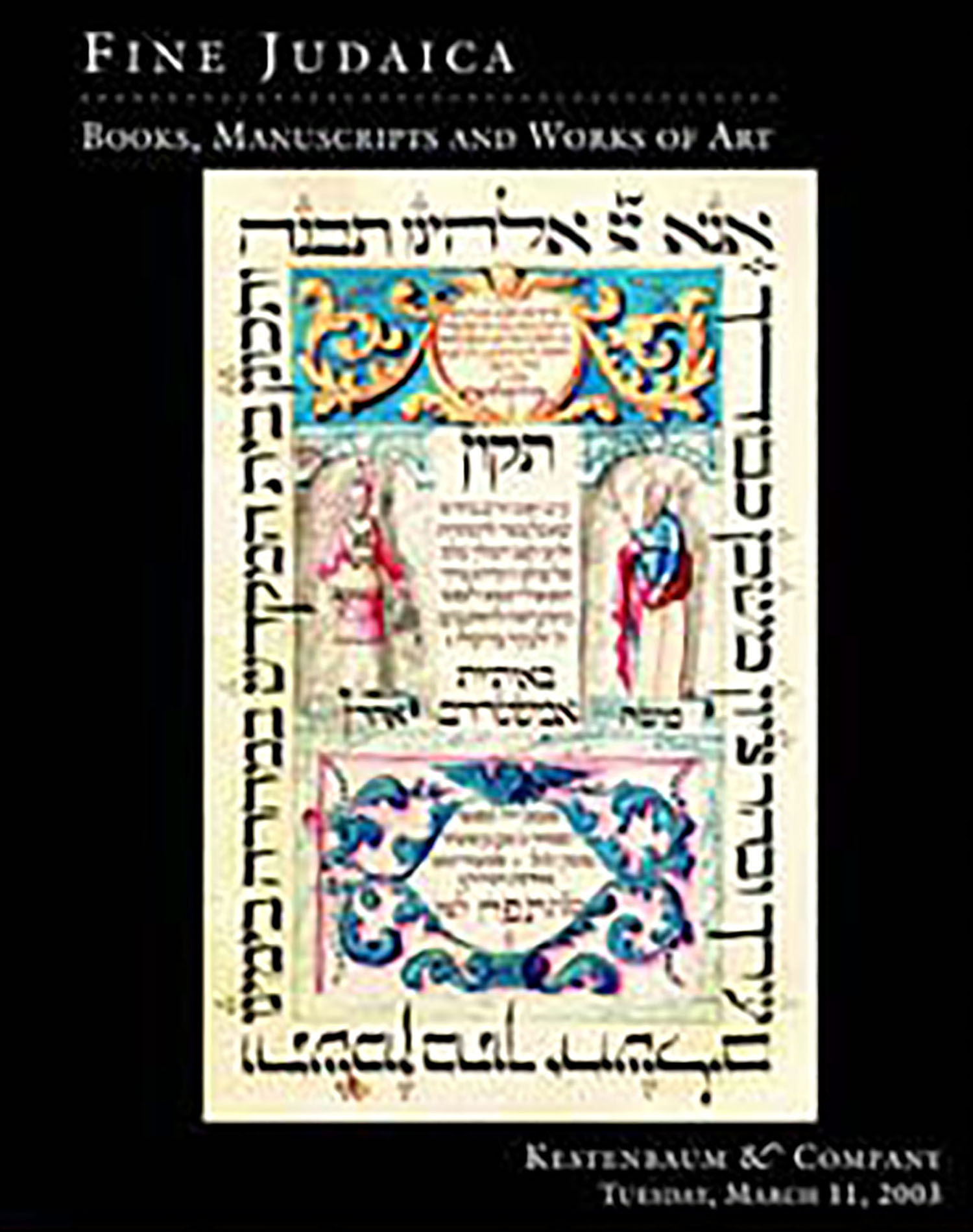RaMBa”M). Sepher Ha’mitzvoth [“The Book of Precepts”]

AUCTION 19 |
Tuesday, March 11th,
2003 at 1:00
Fine Judaica: Printed Books, Manuscripts and Works of Graphic Art
Lot 226
(MOSES BEN MAIMON (MAIMONIDES/.
RaMBa”M). Sepher Ha’mitzvoth [“The Book of Precepts”]
Tan’am: 8th Nissan 1492
Est: $20,000 - $30,000
PRICE REALIZED $20,000
This manuscript includes almost the entire text of Maimonides’ Sepher Ha’mitzvoth in the original Arabic version. There are only six or seven complete or close to complete manuscript copies of the Arabic version extant.
Sepher Ha’mitzvoth was composed before Maimonides wrote his epic Rabbinic Code, the Mishneh Torah. In the Sepher Ha’mitzvoth Maimonides enumerates the commandments of the Torah which traditionally numbered 613, according to his understanding. In his introduction, Maimonides explains the principles employed in determining which commandments can be included in the enumeration. The work does not simply list the commandments but also explains them, sometimes at great length.
The work was translated into Hebrew several times during the Middle Ages, but only one medieval translation by Moses ibn Tibbon survives. Ibn Tibbon’s translation was very popular and exists in about 15 manuscript copies. Rabbi Joseph Kafah, the last owner of this manuscript, prepared a new Hebrew translation from the original Arabic based on this manuscript, which he found to be the most accurate. R. Kafah’s translation was published by Mossad ha’Rav Kook. This manuscript is described by Kafah in his introduction to that edition.
The present manuscript is almost complete. The first leaf of the introduction is supplied in a later hand (as previously noted). Text is lacking between ff. 14 and 15. Two leaves, containing the last third of the Ninth Principle until the last line of the Ninth Principle are not present. The scribe in error, copied Negative Commandment no. 49 after no. 64 and the sequence of numbers from 49-65 is therefore imprecise. There are notes and corrections in the margins of many leaves, some by Rabbi Kafah himself.
Provenance:
Most recently, MS no. 66 in the Collection of the Late Rabbi Joseph Kafah.
With thanks to Dr. Binyamin Richler, Institute of Microfilmed Hebrew Manuscripts, Jerusalem, for his scholarship in researching this manuscript
